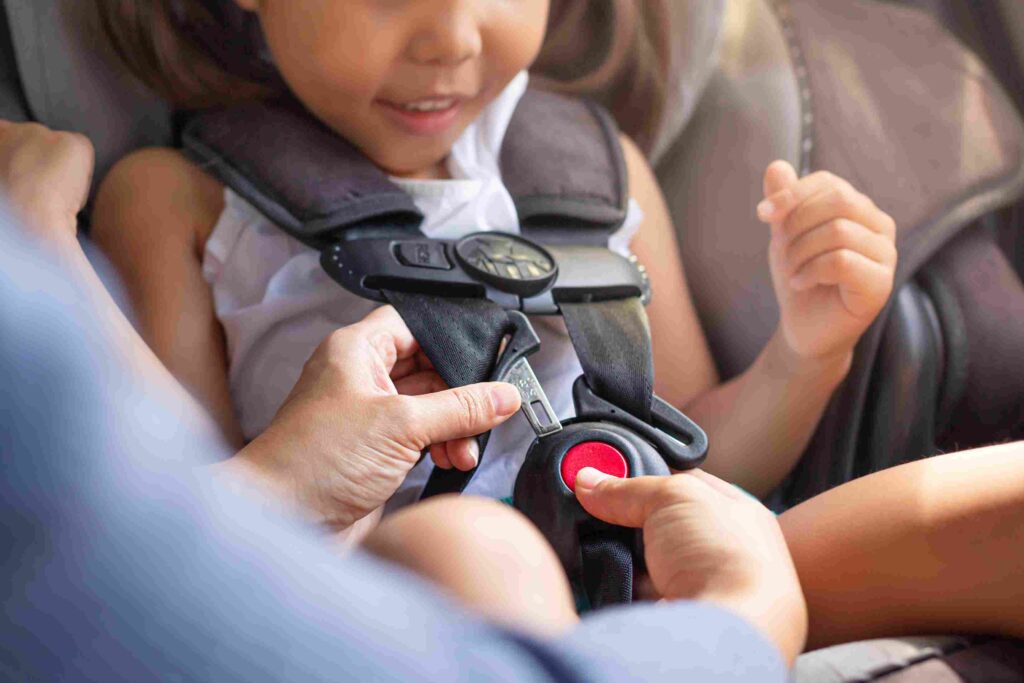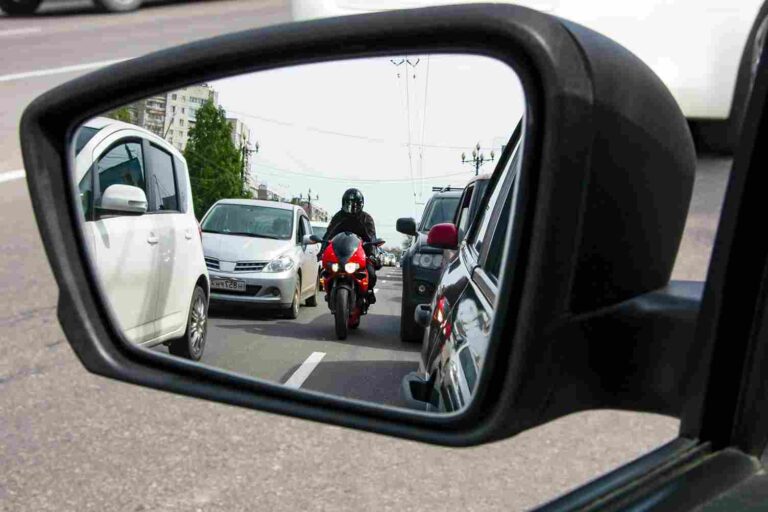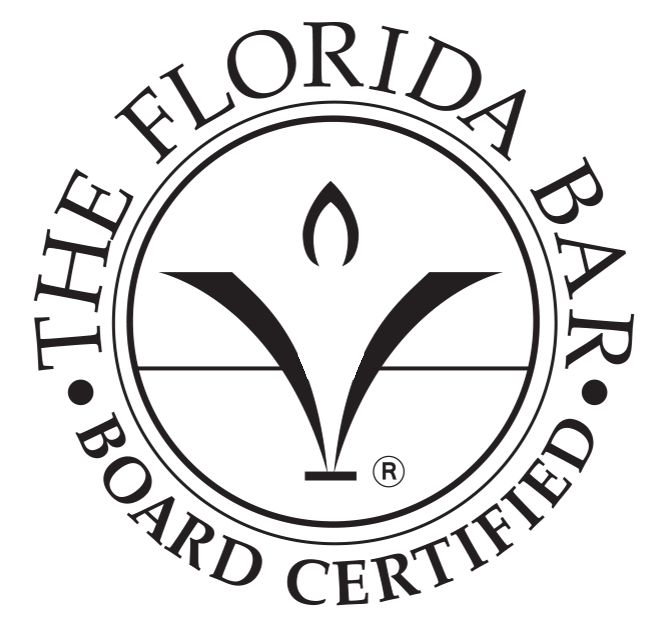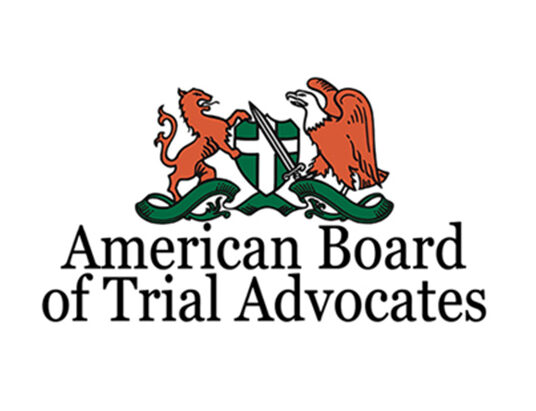Ensuring the safety of our children is of utmost importance, especially when it comes to traveling in vehicles. As car accident lawyers, we understand the devastating impact of accidents on families. That’s why staying informed about the latest car seat laws and recommendations is essential to protect your little ones.
In 2023, Florida implemented new regulations and guidelines to help reduce the risk of injuries in the event of an accident. By complying with these laws and adhering to expert recommendations, you can significantly improve your child’s safety while on the road.
Here, you can learn about Florida’s 2023 car seat laws and recommendations. You will also find valuable insights to help keep your family secure.
Let our expertise as car accident lawyers guide you in making informed decisions about car seat safety and ensuring the well-being of your children.
If you are involved in an accident, and your child is injured, it may be possible to recover compensation. Our car accident lawyers can review your case and explain your options. Contact our office to learn more.
Florida Car Seat Laws in 2023
As car accident lawyers, we want to ensure that our clients are well-informed about Florida’s latest car seat laws and regulations. Here, you can learn about the 2023 Florida car seat laws, covering rear-facing, forward-facing, booster seats, and seat belt use.
Rear-Facing Car Seats
Rear-facing car seats play a crucial role in keeping infants safe while traveling. Learn about the requirements for using these in Florida here.
Age and Weight Requirements
Florida law requires that children under one or weighing less than 20 pounds be secured in a rear-facing car seat (Florida Statutes 316.613). However, safety experts recommend keeping children rear-facing until they reach the car seat’s upper weight and height limits, which can be as high as 40-50 pounds, depending on the model.
Rear-Facing Car Seat Installation Tips
To ensure the safety of your child, follow these tips for installing a rear-facing car seat:
- Place the car seat in the back seat, away from active airbags.
- Ensure the car seat is at the correct angle, as the manufacturer indicates.
- Use the vehicle’s seat belt or LATCH system to ensure the seat is tightly secured.
- Check that the harness straps are snugly fastened at or below the child’s shoulders.
Forward-Facing Car Seats
As children grow, transitioning to a forward-facing car seat becomes necessary to ensure their continued safety on the road.
Age and Weight Requirements
Children should transition to a forward-facing car seat with a harness once they have outgrown the rear-facing car seat’s weight and height limits. In Florida, children must remain in a forward-facing car seat until they are at least four years old and weigh a minimum of 40 pounds (Florida Statutes 316.613).
Proper Harness Use and Installation Tips
Follow these guidelines when installing and using a forward-facing car seat:
- Place the car seat in the back seat, away from active airbags.
- Use the tether strap to secure the top of the car seat to the vehicle’s tether anchor.
- Adjust the harness straps to be at or above the child’s shoulders and snugly fastened.
- Check the car seat manual for specific installation instructions and weight limits for the LATCH system.
Booster Seats
Booster seats bridge the gap between car seats and seat belts, providing added safety for growing children who have outgrown their forward-facing car seats.
Age, Weight, and Height Requirements
Once a child has outgrown the forward-facing car seat, they should use a booster seat until they are big enough to fit properly in a seat belt. Florida law requires that children between the ages of 4 and 5 must be in a booster seat, but experts recommend keeping children in booster seats until they are at least 4 feet 9 inches tall and between 8-12 years old.
Types of Booster Seats and Their Installation
There are two main types of booster seats: high-back boosters, which provide head and neck support, and backless boosters, which only raise the child’s seating position. Both types should be used with a lap and shoulder seat belt. Follow the booster seat manufacturer’s instructions to ensure they are correctly installed.
High-Back Booster Seats
- Position the booster seat in the vehicle’s back seat, away from active airbags.
- Ensure the vehicle’s headrest does not interfere with the booster seat’s back support.
- Thread the lap and shoulder seat belt through the booster seat’s designated belt guides, ensuring the belt lies flat and untwisted.
Backless Booster Seats
- Place the booster seat in the vehicle’s back seat, away from active airbags.
- Use the booster seat in a seating position with both a lap and shoulder seat belt.
- Thread the lap and shoulder seat belt through the booster seat’s designated belt guides, ensuring the belt lies flat and untwisted.
Seat Belt Use
Seat belts are an essential safety measure for older children and adults, helping reduce the risk of injury in an accident.
When to Transition from a Booster Seat
Children should continue using a booster seat until they can properly fit in a seat belt without one. This typically occurs when they are at least 4 feet 9 inches tall and between ages 8-12. To determine if your child is ready to transition, perform the Seat Belt Fit Test:
- The child’s back should be against the vehicle seat.
- Knees should bend at the edge of the seat, with feet touching the floor.
- The lap belt should lie snugly across the upper thighs, not the stomach.
- The shoulder belt should fit across the chest and shoulder, not the neck or face.
Proper Seat Belt Positioning
Once your child has outgrown a booster seat, it is crucial to ensure the seat belt is positioned correctly for optimal safety. The lap belt should be low and snug across the upper thighs, while the shoulder belt should cross the chest and mid-shoulder, away from the neck. Ensure the seat belt is not twisted, and remind your child always to wear lap and shoulder belts.
Recommendations from Leading Safety Organizations
Understanding the recommendations of leading safety organizations can help parents make informed decisions regarding their children’s car seat safety.
American Academy of Pediatrics (AAP)
Rear-Facing Car Seats
The AAP recommends that children remain in rear-facing car seats for as long as possible until they reach the highest weight or height their car seat’s manufacturer allows. Depending on the car seat model, this can be as high as 40-50 pounds. Rear-facing car seats provide better support for a child’s head, neck, and spine in a crash.
Forward-Facing Car Seats
Once a child has outgrown the rear-facing car seat, the AAP recommends transitioning to a forward-facing car seat with a harness. Children should remain in this type of car seat until they reach the maximum weight or height limits set by the car seat manufacturer, which can range from 40-65 pounds.
Booster Seats
The AAP advises that children use a booster seat once they have outgrown their forward-facing car seat until they are at least 4 feet 9 inches tall and between the ages of 8-12. Booster seats help position the seat belt correctly, ensuring it fits snugly across the upper thighs and the chest.
National Highway Traffic Safety Administration (NHTSA)
Car Seat Selection
The NHTSA encourages parents to choose a car seat appropriate for their child’s age, weight, and height and one that fits well in their vehicle. Additionally, parents should look for car seats that meet Federal Motor Vehicle Safety Standards.
Car Seat Installation Tips
The NHTSA provides a wealth of proper car seat installation resources, including instructional videos and guidelines. They recommend seeking assistance from a certified Child Passenger Safety Technician or visiting a car seat inspection station to ensure the car seat is installed correctly.
Insurance Institute for Highway Safety (IIHS)
Vehicle Safety Ratings
The IIHS conducts comprehensive crash tests and evaluates vehicle safety features to help consumers make informed decisions when purchasing a vehicle. Parents should consider vehicles with high safety ratings to provide the best protection for their children.
LATCH System
The IIHS also evaluates the Lower Anchors and Tethers for Children (LATCH) system in vehicles, designed to make car seat installation easier. When selecting a vehicle, parents should consider those with a “Good” or “Acceptable” LATCH rating to ensure a secure and straightforward car seat installation process.
Keep Your Kids Safe By Knowing and Following Florida Car Seat Laws
Keeping your children safe while traveling in a vehicle is paramount, and being well-informed about Florida’s car seat laws and recommendations is crucial in achieving that. As car accident lawyers, we encourage you to familiarize yourself with the guidelines provided by leading safety organizations like the AAP, NHTSA, and IIHS and adhere to Florida’s car seat regulations for rear-facing, forward-facing, and booster seats.
By selecting an appropriate car seat for your child’s age, weight, and height, installing it correctly, and ensuring proper seat belt use, you can significantly reduce the risk of injury in the event of an accident.
Remember, car seat safety doesn’t stop at following the law; it also involves staying up-to-date on best practices and recommendations from trusted sources. Keep your kids safe by knowing and following Florida car seat laws, and feel confident that you’re taking the necessary steps to protect your most precious passengers.











